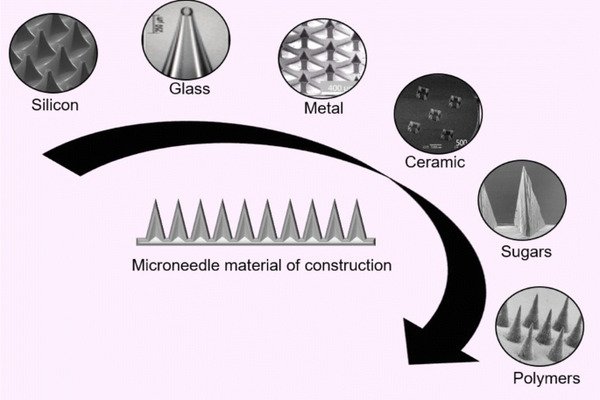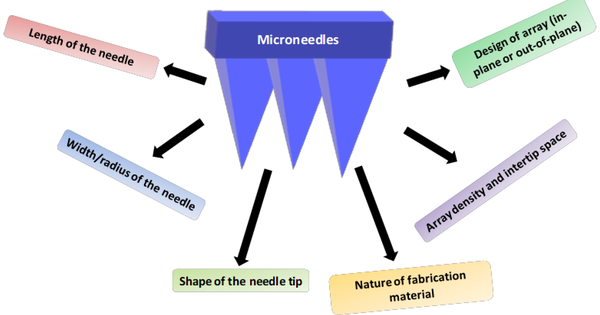Microneedle-based drug delivery is a technique that involves the use of very small needles to deliver drugs or other substances into the body. While this technique has primarily been used in human medicine, there is growing interest in applying it to plant medicine as well.
Due to worsening environmental conditions caused by climate change, an ever-expanding human population, limited resources, and a scarcity of arable land, the agriculture industry is under pressure to adopt sustainable and precise agricultural practices that enable more efficient use of resources. As a result, developing delivery systems for micronutrients, pesticides, and antibiotics in crops is critical to ensuring high productivity and high-quality produce while reducing resource waste.
However, current and standard agrochemical application practices in plants are inefficient. These practices have serious environmental consequences, including water and soil contamination, biodiversity loss, and degraded ecosystems, as well as public health issues like respiratory problems, chemical exposure, and food contamination.
Researchers from the Disruptive & Sustainable Technologies for Agricultural Precision (DiSTAP) Interdisciplinary Research Group (IRG) of the Singapore-MIT Alliance for Research and Technology (SMART), MIT’s research enterprise in Singapore, and their collaborators from Temasek Life Sciences Laboratory (TLL) and Massachusetts Institute of Technology (MIT) have developed the first-ever microneedle-based drug delivery technique for plants. The method can be used to precisely deliver controlled amounts of agrochemicals to specific plant tissues for research purposes. When used in the field, it has the potential to improve crop quality and disease management.
The revolutionary technique is a first in the agricultural industry. It also reduces resource waste and environmental pollution. In the future, with the possibility of automated microneedle application, the technique could be used in high-tech outdoor and indoor farms for precise agrochemical delivery and disease management.
Dr. Yunteng Cao
Climate change, an ever-increasing human population, a scarcity of arable land, and limited resources are putting pressure on the agriculture industry to adopt more sustainable and precise practices that promote more efficient use of resources (e.g., water, fertilizers, and pesticides) and mitigation of environmental impacts. It is critical to developing delivery systems that efficiently deploy agrochemicals such as micronutrients, pesticides, and antibiotics in crops to ensure high productivity and high produce quality while minimizing resource waste.
Current and standard practices for agrochemical application in plants, such as foliar spray, are inefficient due to off-target application, rapid run-off in the rain, and rapid degradation of actives. These practices also have serious environmental consequences, including water and soil contamination, biodiversity loss, and degraded ecosystems, as well as public health issues like respiratory problems, chemical exposure, and food contamination.

The novel silk-based microneedles technique developed by SMART overcomes these limitations by deploying and targeting a known amount of payload directly into a plant’s deep tissues, resulting in increased plant growth efficacy and disease management. The technique is minimally invasive because it delivers the compound without causing long-term damage to the plants and is environmentally sustainable. It reduces resource waste and mitigates the negative side effects of agrochemical contamination of the environment. Furthermore, it will help to foster precise agricultural practices and provide new tools for studying plants and designing crop traits, thereby ensuring food security.
Described in a paper titled “Drug Delivery in Plants Using Silk Microneedles,” published in the January 2023 issue of Advanced Materials, the research studies the first-ever polymeric microneedles used to deliver small compounds to a wide variety of plants and the plant response to biomaterial injection. Through gene expression analysis, the researchers could closely examine the reactions to drug delivery following microneedle injection.
Minimal scar and callus formation were observed, suggesting minimal injection-induced wounding to the plant. The proof-of-concept provided in this study opens the door to plant microneedles’ application in plant biology and agriculture, enabling new means to regulate plant physiology and study metabolisms via efficient and effective delivery of payloads.
The study optimized the design of microneedles to target the Arabidopsis (mouse-ear cress) systemic transport system. For the delivery, gibberellic acid (GA3), a widely used plant growth regulator in agriculture, was chosen. The researchers discovered that delivering GA3 via microneedles was more effective than traditional methods in promoting growth (such as foliar spray). They then used genetic methods to confirm the technique’s effectiveness and show that it can be applied to a variety of plant species, including vegetables, cereals, soybeans, and rice.
Professor Benedetto Marelli, the paper’s co-corresponding author, Principal Investigator at DiSTAP, and Associate Professor of Civil and Environmental Engineering at MIT, stated, “When compared to current methods of agrochemical delivery, which waste resources, the technique saves resources. The microneedles break through tissue barriers and release compounds directly inside the plants, avoiding agrochemical losses. The technique also enables precise control of the agrochemical amounts used, ensuring high-tech precision agriculture and crop growth to maximize yield.”
“The revolutionary technique is a first in the agricultural industry. It also reduces resource waste and environmental pollution. In the future, with the possibility of automated microneedle application, the technique could be used in high-tech outdoor and indoor farms for precise agrochemical delivery and disease management” Dr. Yunteng Cao, the paper’s first author, and Postdoctoral Associate of Civil and Environmental Engineering at MIT, elaborated.
“This study also emphasizes the significance of using genetic tools to investigate plant responses to biomaterials. Analyzing these responses at the genetic level provides a comprehensive understanding of these responses, which can then be used to guide the development of future biomaterials that can be used throughout the AgriFood industry “Sally Koh, co-first author of this paper and Ph.D. candidate at the National University of Singapore (NUS) and TLL, agreed.
















